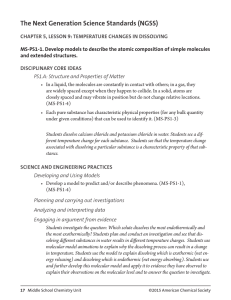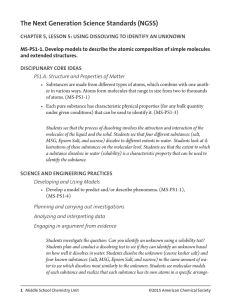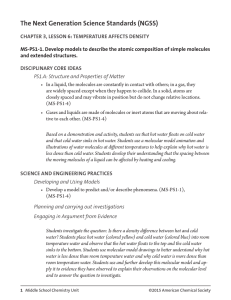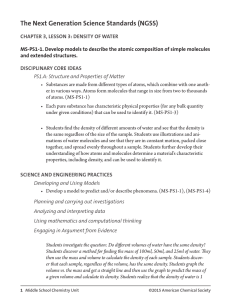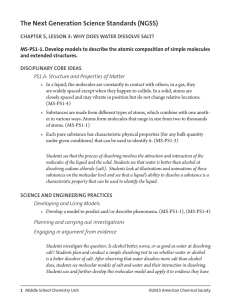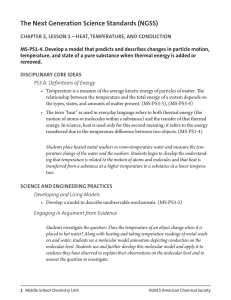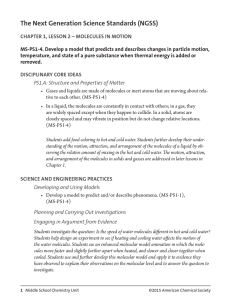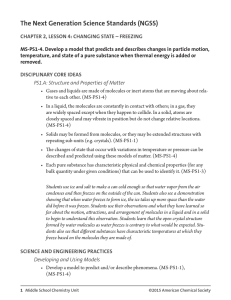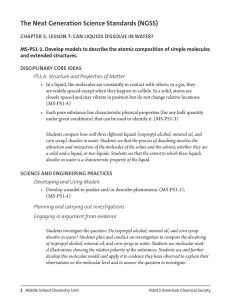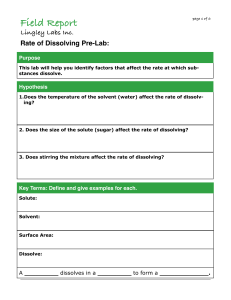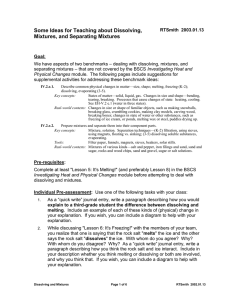The Next Generation Science Standards (NGSS)
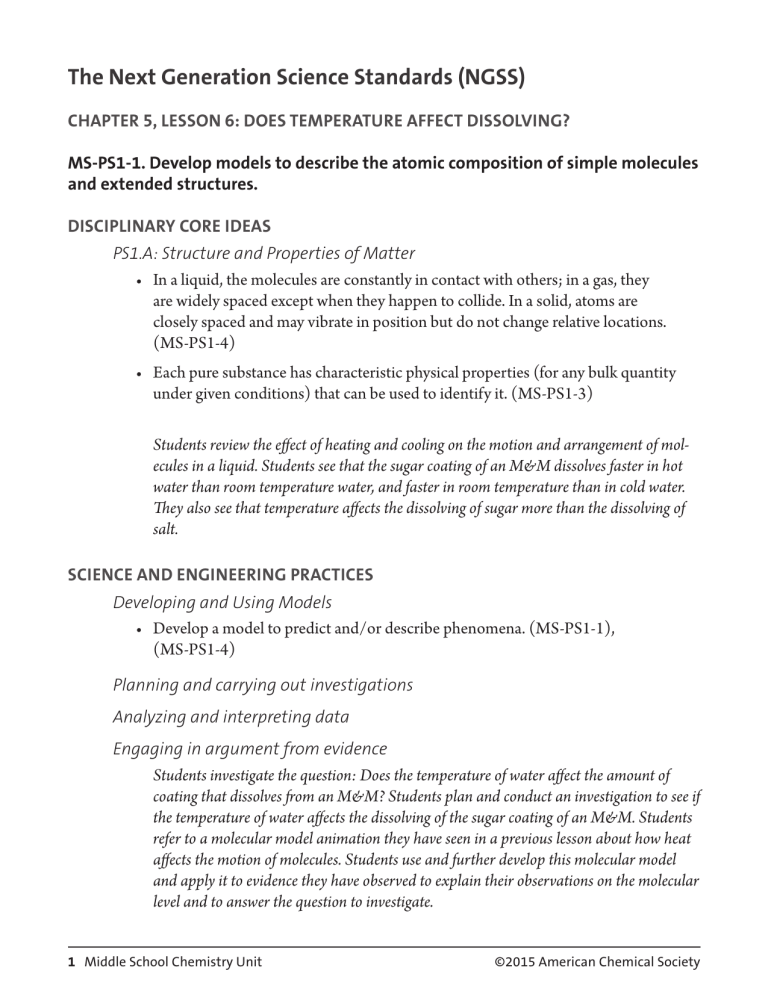
The Next Generation Science Standards (NGSS)
CHAPTER 5, LESSON 6: DOES TEMPERATURE AFFECT DISSOLVING?
MS-PS1-1. Develop models to describe the atomic composition of simple molecules and extended structures.
DISCIPLINARY CORE IDEAS
PS1.A: Structure and Properties of Matter
• In a liquid, the molecules are constantly in contact with others; in a gas, they are widely spaced except when they happen to collide. In a solid, atoms are closely spaced and may vibrate in position but do not change relative locations.
(MS-PS1-4)
• Each pure substance has characteristic physical properties (for any bulk quantity under given conditions) that can be used to identify it. (MS-PS1-3)
Students review the effect of heating and cooling on the motion and arrangement of molecules in a liquid. Students see that the sugar coating of an M&M dissolves faster in hot water than room temperature water, and faster in room temperature than in cold water.
They also see that temperature affects the dissolving of sugar more than the dissolving of salt.
SCIENCE AND ENGINEERING PRACTICES
Developing and Using Models
• Develop a model to predict and/or describe phenomena. (MS-PS1-1),
(MS-PS1-4)
Planning and carrying out investigations
Analyzing and interpreting data
Engaging in argument from evidence
Students investigate the question: Does the temperature of water affect the amount of coating that dissolves from an M&M? Students plan and conduct an investigation to see if the temperature of water affects the dissolving of the sugar coating of an M&M. Students refer to a molecular model animation they have seen in a previous lesson about how heat affects the motion of molecules. Students use and further develop this molecular model and apply it to evidence they have observed to explain their observations on the molecular level and to answer the question to investigate.
1 Middle School Chemistry Unit ©2015 American Chemical Society
CROSSCUTTING CONCEPTS
Cause and Effect
• Cause and effect relationships may be used to predict phenomena in natural or designed systems. (MS-PS1-4)
Scale, Proportion, and Quantity
• Time, space, and energy phenomena can be observed at various scales using models to study systems that are too large or too small. (MS-PS1-1)
Students use molecular-level models of water at different temperatures to explain how these sub-microscopic characteristics affect the macroscopic observable characteristic of more sugar dissolving in hotter water.
2 Middle School Chemistry Unit ©2015 American Chemical Society
